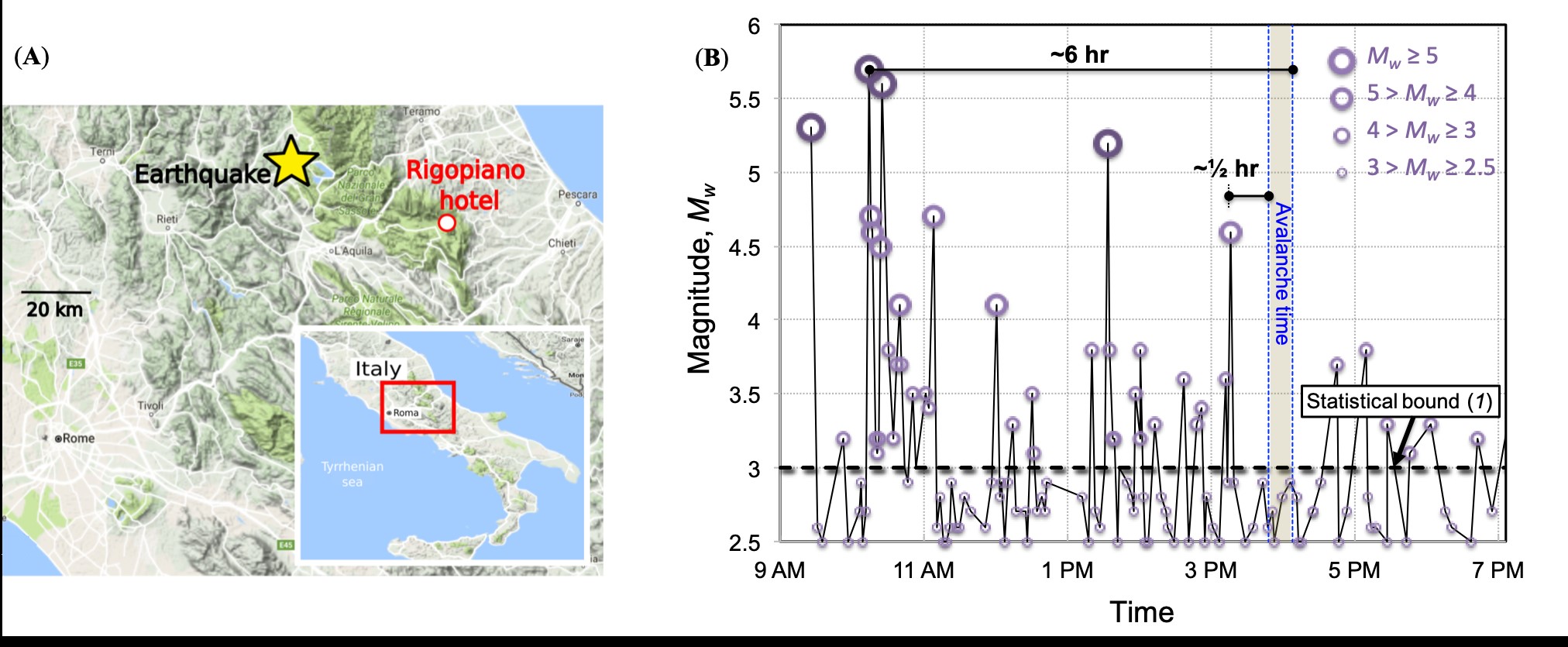Delayed release in earthquake-induced avalanches
2017 - 2019
Snow avalanches can be triggered by strong earthquakes. Most existing models assume that snow slab avalanches happen simultaneously during or immediately after their triggering. Therefore, they cannot explain the plausibility of delayed avalanches that are released minutes to hours after a quake. This research establishes the basic mechanism of delays in earthquake-induced avalanche release using a novel analytical model that yields dynamics consistent with three documented cases, including two from Western Himalaya and one from central Italy. The mechanism arises from the interplay between creep, strain softening and strain-rate sensitivity of snow, which drive the growth of a basal shear fracture. The resulting model demonstrates that earthquake-triggered delayed avalanches are rare, yet possible, and could lead to significant damage, especially in long milder slopes. The generality of the model formulation opens a new approach for exploring many other problems related to natural slab avalanche release.

Funding
SNSF Grant 200021_168998. ARC Grant DP160104310
Researchers
Prof. Dr. Alexander M. Puzrin
Prof. Itai Einav
Dr. Thierry Faug
Publications
Contact
Head of Institute for Geotechnical Engineering
Institut für Geotechnik
Stefano-Franscini-Platz 5
8093
Zürich
Switzerland
